Nicotinamide adenine dinucleotide (NAD) metabolism plays a crucial role in a variety of physiological processes including DNA repair, metabolism, and post-translational protein modification. A decline in NAD levels with ageing has been identified as a contributing factor to several age-related diseases such as neurodegeneration, metabolic disorders, and cancer. Conversely, upregulation of NAD metabolism has been shown to have beneficial effects in extending the lifespan of various organisms and preventing the decline of NAD levels. In this review, we summarise the basic functions of enzymes involved in NAD synthesis and degradation and their dysregulation in various ageing processes.
Introduction:
Nicotinamide adenine dinucleotide (NAD) is a versatile metabolite that comprises of two mononucleotides, adenosine monophase (AMP) and nicotinamide mononucleotide (NMN) which are covalently linked together (1). It was initially discovered in 1906 as a coenzyme involved in yeast fermentation (2). NAD is essential for regulating energy metabolism pathways, including glycolysis, fatty acid oxidation, tri carboxylic acid (TCA) cycle and oxidative phosphorylation. These pathways are mediated by the redox interplay between the oxidised (NAD+) and reduced (NADH) forms of NAD, which act as cofactors for NAD-dependent enzymes (3).
NAD is also consumed in processes such as protein deacetylation and ADP-ribosylation by sirtuin and poly (ADP-ribose) polymerase (PARP) enzymes, as well as by NAD glycohydrolase such as CD38 and CD157 (4). These critical pathways are believed to regulate various ageing processes through NAD metabolism (Fig.1). Mammals are able to synthesise NAD via three pathways: the de novo pathway from tryptophan, the Preiss-Handler pathway from nicotinic acid, and the salvage pathway from nicotinamide. Additionally, NAD can be generated from nicotinamide riboside (NR) (5).
Emerging research has emphasised the crucial role of NAD in ageing and longevity. As we age, NAD levels decrease due to a discrepancy between its synthesis and consumption, leading to ageing-related illnesses such as metabolic disorders, cancer, and neurodegenerative diseases. To counteract this decline, administering NAD precursors in the diet can replenish NAD levels in aged tissues and provide advantages against ageing-related illnesses. Additionally, elevating NAD metabolism has been shown to increase the lifespan of various organisms, such as yeast, worms, flies, and rodents. Therefore, NAD metabolism is becoming a promising target for interventions aimed at promoting healthy ageing and extending lifespan (6).

NAD Biosynthesis
De novo pathway:
The de novo NAD synthesis pathway starts with the conversion of tryptophan to N-formylkynurenine by either tryptophan-2,3-dioxygenase (TDO) or indoleamine-2,3-dioxygenase (IDO). N-formylkynurenine is then converted to kynurenine by an enzyme called kynurenine formamidase (KFase) and hydroxylated to form 3-hydroxykynurenine by kynurenine-3-hydroxylase (K3H), which requires NADPH as a cofactor. The next step involves the conversion of 3-hydroxykynurenine to 2-amino-3-carboxy-muconate-semialdehyde (ACMS) through two enzymatic reactions. ACMS can then react with ACMS decarboxylase (ACMSD) to form 2-amino-3-muconate-semialdehyde (AMS), which can exit the de novo pathway and enter the glutarate pathway or spontaneously form picolinic acid (7).
Alternatively, ACMS can undergo spontaneous cyclization to form quinolinic acid (QA). QA can be converted to nicotinic acid mononucleotide (NAMN) by quinolinate phosphoribosyltransferase (QPRT), which is a comparatively inefficient reaction. Only when ACMSD becomes saturated, QA is converted to NAMN, making this reaction the second rate-limiting step of the de novo synthetic pathway. NAMN is a key precursor of NAD and can enter as an intermediate of the Preiss-Handler pathway after conversion from QA. In the Preiss-Handler pathway, NAMN is converted to nicotinamide adenine dinucleotide (NAD) through a series of enzymatic reactions involving nicotinamide phosphoribosyltransferase (NAMPT), nicotinamide mononucleotide adenylyltransferase (NMNAT), and adenosine diphosphate (ADP)-ribosyl cyclase/cyclic ADP-ribose hydrolase (CD38/157) (8).
Preiss-Handler pathway:
It is a three-step synthetic pathway involved in the conversion of nicotinic acid (NA) to nicotinamide adenine dinucleotide (NAD) in both rat models and human erythrocyte cultures. NAD is an important molecule in cellular metabolism, playing a key role in energy production and regulation of cellular processes (9).
The first step involves the metabolism of NA by an enzyme known as NA phosphoribosyltransferase (NAPRT), which utilises phosphoribosyl pyrophosphate (PRPP) as a substrate to convert NA to nicotinic acid mononucleotide (NAMN). NAPRT activity is controlled by ATP, which stimulates the enzyme at low concentrations and constrains it at higher concentrations. In the second step, NAMN is transformed to nicotinic acid adenine dinucleotide (NAAD) by the action of a variety of NMN adenylyltransferase (NMNAT1-3), which are differentially compartmentalised within cells. NMNAT1 is located solely in the nucleus, NMNAT2 in the Golgi apparatus and cytosol whereas NMNAT3 is expressed in the mitochondria and cytosol (10-12).
Lastly, NAAD is converted to NAD by an enzyme known as NAD synthetases (NADSYN1-2), which are also differentially compartmentalised within cells. NADSYN1 can utilise either glutamine or ammonia as a donor to NAAD and is located largely in the small intestine, liver, kidney, and testicles, while NADSYN2 activity is exclusively ammonia-dependent and is highly expressed in skeletal muscle and heart (13).
Overall, the Preiss-Handler pathway is an important pathway involved in the production of NAD, a critical molecule in cellular metabolism. The pathway is regulated by a variety of molecules involved in energy production and is differentially compartmentalised within cells, suggesting a complex and tightly regulated process.
Salvage pathway:
NAD plays a crucial role in cellular energy metabolism and is involved in numerous cellular processes. The human body can synthesise NAD de novo from tryptophan or through the NAD salvage pathway. The NAD salvage pathway is a process that recycles NAD from its breakdown products or from other precursors.
Nicotinamide (NAM) is a precursor of NAD that can be recycled through the salvage pathway. In the first step of the salvage pathway, nicotinamide phosphoribosyltransferase (NAMPTs) convert NAM to NAM mononucleotide (NMN) using PRPP as a cofactor. NAMPTs exist in both intracellular (iNAMPT) and extracellular (eNAMPT) forms. The eNAMPT variant has an increased propensity towards NMN biosynthesis and can be found circulating in human plasma at relatively high concentrations. eNAMPT is also known as pre-B cell colony-enhancing factor (PBEF) and was originally discovered as a cytokine implicated in cell colony formation. Additionally, eNAMPT production has been connected to the action of both leukocytes and adipocytes (14).
iNAMPT is located in the nucleus and cytosol and has diverse tissue expression with activity mainly occurring in the bone marrow, liver, and skeletal muscle (15). NAMPTs have been linked to the pathogenesis of various human diseases, including cancer, diabetes mellitus, stroke, atherosclerosis, and rheumatoid arthritis (16). Deacetylation of iNAMPT via SIRT1 results in stimulated adipocyte eNAMPT secretion in mice (17).
NR is another NAD precursor that can enter the salvage pathway and be converted to NMN by NAM riboside kinases (NRK1-2), a highly conserved enzymatic family in eukaryotes. NAM NRK1 is universally expressed across human tissue, whereas NRK2 exhibits variable expression largely in the skeletal muscle, heart, and brain. Following the formation of NMN from either NAM or NR, the same NMNAT enzymes of the Preiss-Handler pathway adenylate NAMN to NAAD, which is then converted to NAD through further enzymatic steps. Overall, the NAD salvage pathway is an important mechanism for maintaining NAD levels in the body and regulating various cellular processes (8).
Understanding the Molecular Basis of Age-Associated NAD Depletion:
Studies have found that NAD levels decrease with age in various tissues i.e., skeletal muscle, heart, brain, liver, skin and extracellular fluids (18-20). This decline is thought to be caused by a disruption in the balance between NAD synthesis and degradation. Ageing affects the pathways of NAD synthesis, leading to a decrease in NAD levels.
Circadian rhythm:
As we age, NAD levels tend to decline, which can have adverse effects on various biological processes. One of the factors contributing to this decline is a decrease in the protein levels and enzymatic activity of Nampt. Nampt is involved in synthesising NAD and its levels also decline with age in many tissues (21).
Circadian rhythm controls our sleep-wake cycle and other biological processes, and is also thought to play a role in this decline of NAD and Nampt levels. Certain proteins involved in the circadian rhythm i.e., CLOCK: BMAL1 and SIRT1, are known to regulate Nampt expression. Specifically, these proteins interact with the promoter region of the Nampt gene and help to amplify the circadian oscillations of Nampt and NAD levels through a regulatory loop (22,23).
However, ageing can disrupt the circadian system, leading to changes in the amplitude and quality of circadian rhythms. This can result in reduced expression of Nampt and NAD, further perpetuating the decline of these molecules. A study (24) found that in aged mice, Nampt and SIRT1 levels were found to be significantly reduced in the suprachiasmatic nucleus (SCN), a region in the hypothalamus that regulates circadian rhythms. Similar reductions in Nampt and SIRT1 expression have also been observed in the Leydig cells of rat testes.
Chronic inflammation:
Chronic inflammation caused by various cellular stresses, including oxidative stress and obesity, can lead to a decline in Nampt levels in multiple metabolic tissues (25). Inflammatory cytokines such as IL-1β, IL-6, and TNF-α decrease Nampt gene expression and inhibit the CLOCK: BMAL1-mediated clock gene expression. This suppression of Nampt gene expression is further amplified in aged tissues, resulting in a reduction of NAD synthesis. While intracellular Nampt levels are decreased in obesity, serum Nampt (eNampt) levels are increased and correlate with the amount of adipose tissue in obese patients. Further research is needed to understand the mechanisms underlying these discrepancies in Nampt levels in obese patients subject to chronic inflammation (26).
Micro RNA:
MicroRNAs are small RNA molecules that regulate gene expression by binding to the messenger RNA (mRNA) of target genes, leading to their degradation or inhibition of translation. Many microRNAs have been implicated in the ageing process, and miR-34a is one such microRNA that plays a role in regulating hepatic NAD levels. NAD plays a crucial role in cellular metabolism and energy generation and its deterioration is linked with ageing and age-related diseases. Nampt and SIRT1 are two chief enzymes involved in NAD biosynthesis and utilisation respectively. MicroRNA-34a (miR-34a) has been shown to directly bind to the 3' UTR region of Nampt and SIRT1 genes, leading to their suppression and subsequent waning in NAD levels (27).
As we age or become obese, the levels of a molecule called miR-34a increase in the liver, causing a decrease in the levels of Nampt and NAD. NAD reduction can lead to health issues. Researchers have found that artificially increasing miR-34a in animals results in a decrease in Nampt levels and mimics the symptoms of obesity. However, when they silenced miR-34a in obese animals, Nampt and NAD levels were restored, which led to improvements in liver health and glucose tolerance through the Nampt/NAD/SIRT1 pathway (28).
DNA damage:
NAD is consumed during ageing due to increased activity of PARP, a major NAD-consuming enzyme that initiates repair processes at sites of DNA single-strand breaks. This process continuously consumes large amounts of NAD, and ageing accelerates the production of reactive oxygen species (ROS), causing further DNA damage and promoting NAD consumption (29).
Animal studies have reported that PARP1 activity increases with ageing in various organs, and inhibition or genetic deletion of PARP1 prevents NAD declines during ageing and nutrient stress. However, the inhibition of PARP may increase DNA damage in cells and promote cancer initiation, highlighting the importance of maintaining a fine balance between promoting and inhibiting DNA repair processes by PARP to prevent ageing phenotypes in vivo (30).
CD38:
CD38 is a NAD-consuming enzyme that degrades NAD into ADP-ribose (ADPR) and NAM, contributing to the decline of NAD during ageing (Malavasi et al., 2008). CD38 protein levels significantly increase with age, leading to increased NAD consumption. The increased CD38 activity is associated with declining mitochondrial NAD levels, while increased PARP activity mainly contributes to declining nuclear NAD levels. The regulatory mechanism of CD38 expression during ageing is unknown, but chronic inflammation may be a possible trigger for the upregulation of CD38 gene expression in aged tissues (31).
NAD metabolism and organ ageing:
Decreasing levels of NAD (nicotinamide adenine dinucleotide) have been implicated in various ageing-related changes in tissues and organs, such as cognitive decline, sarcopenia, vision loss, and hearing loss. Dysregulation of NAD metabolism can also contribute to ageing-associated diseases, including obesity, diabetes, and Alzheimer’s disease.
Muscle ageing:
Sarcopenia, a progressive loss of muscle mass, reduced muscle strength, and decline of physical performance, is a hallmark of physical ageing. Skeletal muscle shows a significant reduction in NAD levels with ageing, leading to muscle degeneration. Muscle-specific Nampt knockout mice, which have significantly decreased NAD levels in skeletal muscle, develop progressive loss of muscle fibres and weakened muscle strength with ageing. Supplementation with NR restores age-dependent declines in muscle-specific Nampt knockout mice, suggesting that a decline in NAD levels may be involved in the progressive dysfunction with ageing. Artificial overexpression of Nampt in skeletal muscle preserves the ability in endurance exercise, which typically declines in normal aged mice (32).
Brain ageing:
With ageing, the brain begins to shrink due to the loss of neuronal cells and synapses. Cognitive declines are also common in normal ageing, and these changes are associated with morphological changes in the aged brain. Alzheimer's disease (AD) is a type of cognitive impairment that is significantly increased with ageing. Recent studies suggest that NAD metabolism plays a critical role in normal and pathological ageing in the brain (33). NAD levels decrease with age in various subregions of the brain, and hippocampal NAD and Nampt levels are significantly reduced with ageing. Optimum NAD levels are considered a critical factor in maintaining cognitive function during normal ageing. In AD, NAD metabolism is profoundly involved in pathogenesis. Recent studies have indicated that NR administration to AD model mice ameliorates cognitive function through the upregulation of β-secretase 1 degradation and mitochondrial gene expression. Additionally, NMN also has a protective role against AD through the restoration of mitochondrial respiratory deficits (34).
Ageing in metabolism process:
Ageing affects metabolism and is associated with changes in both quantity and quality. Obesity, which is a risk factor for metabolic disorders such as diabetes and dyslipidemia, also accelerates ageing by inducing chronic inflammation. NAD levels in metabolic organs such as the liver and adipose tissues are reduced with ageing, which disturbs the robustness of the metabolic system and its adaptations to environmental changes. Declining NAD levels are associated with ageing-related metabolic diseases such as diabetes and NAFLD (35).
NAD metabolism influences systemic insulin sensitivity and insulin secretion by beta cells in islets. Heterozygous Nampt knockout mice show impaired glucose tolerance due to deteriorated glucose-stimulated insulin secretion. Adipocyte-specific Nampt deletion in mice reduces serum levels of adiponectin and increases serum levels of free fatty acids. Adipocyte-specific Nampt knockout mice display insulin resistance not only in adipose tissue but also in the liver and skeletal muscle, indicating that deletion of Nampt in adipocytes has a systemic effect on insulin resistance (36).
Age related vision and hearing loss:
Ocular ageing and Declining eye function is commonly seen in ageing populations, with age-related changes observed in the cornea, lens, and retina. Age-related ocular diseases, such as cataracts, glaucoma, and age-related macular degeneration, are caused by retinal cell death and subsequent irreversible degeneration of retinal cell axons. NAD decline in retinal photoreceptor cells is associated with retinal dysfunction and severe vision loss (37). In a study (38), a decrease in NAD levels was observed in the retinas of aged C57B/6 mice, which was linked to retinal dysfunction. Additionally, deleting the Nampt gene in retinal photoreceptor cells caused significant vision loss, which could be reversed by administering NMN.
Age related hearing loss (ARHL) is a common condition affecting most elderly individuals and is characterised by a gradual decline in hearing ability. Studies have shown that hearing impairment may contribute to cognitive dysfunction in older adults (39). The primary cause of ARHL is considered to be the irreversible degeneration of cochlear hair cells and spiral ganglion neurons, with increased oxidative stress and mitochondrial DNA deletion playing a significant role in its pathophysiology (40). However, calorie restriction has been shown to slow the progression of ARHL by decreasing oxidative stress in the cochlear, with SIRT3 playing a crucial role in this protective effect (41).
Additionally, studies have reported that NAD precursors may be a potential treatment for ARHL in humans, as they have been shown to rescue mice from noise-induced hearing loss in a SIRT3-dependent manner (42).
Conclusion:
NAD metabolism plays a crucial role in the ageing process by regulating various cellular processes such as DNA repair, energy production, and gene expression. As we age, the levels of NAD in our cells decline, leading to a decrease in metabolic function and increased susceptibility to age-related diseases. However, there is growing evidence to suggest that interventions such as supplementation with NAD precursors like NR and NMN can boost NAD levels and improve metabolic health in ageing individuals. While this approach has shown promise in experimental studies, its potential benefits and risks need to be carefully evaluated through clinical trials. Overall, the complex network of processes involving NAD and its derivatives has significant potential for targeted interventions in the treatment of various diseases.
References:
- Pollak, N., Dölle, C., & Ziegler, M. (2007). The power to reduce: pyridine nucleotides–small molecules with a multitude of functions. Biochemical Journal, 402(2), 205-218.
- Harden, A., & Young, W. J. (1906). The alcoholic ferment of yeast-juice. Proceedings of the Royal Society of London. Series B, Containing Papers of a Biological Character, 77(519), 405-420.
- Cantó, C., Menzies, K. J., & Auwerx, J. (2015). NAD+ metabolism and the control of energy homeostasis: a balancing act between mitochondria and the nucleus. Cell metabolism, 22(1), 31-53.
- Quarona, V., Zaccarello, G., Chillemi, A., Brunetti, E., Singh, V. K., Ferrero, E., ... & Malavasi, F. (2013). CD38 and CD157: a long journey from activation markers to multifunctional molecules. Cytometry Part B: Clinical Cytometry, 84(4), 207-217.
- Bieganowski, P., & Brenner, C. (2004). Discoveries of nicotinamide riboside as a nutrient and conserved NRK genes establish a Preiss-Handler independent route to NAD+ in fungi and humans. Cell, 117(4), 495-502.
- Yaku, K., Okabe, K., & Nakagawa, T. (2018). NAD metabolism: Implications in ageing and longevity. Ageing research reviews, 47, 1-17.
- Salter, M., & Pogson, C. I. (1985). The role of tryptophan 2, 3-dioxygenase in the hormonal control of tryptophan metabolism in isolated rat liver cells. Effects of glucocorticoids and experimental diabetes. Biochemical journal, 229(2), 499-504.
- Kincaid, J. W., & Berger, N. A. (2020). NAD metabolism in ageing and cancer. Experimental Biology and Medicine, 245(17), 1594-1614.
- Preiss, J., & Handler, P. (1958). Biosynthesis of diphosphopyridine nucleotide: I. Identification of intermediates. Journal of Biological Chemistry, 233(2), 488-492.
- Balducci, E., Emanuelli, M., Magni, G., Raffaelli, N., Ruggieri, S., Vita, A., & Natalini, P. (1992). Nuclear matrix-associated NMN adenylyltransferase activity in human placenta. Biochemical and biophysical research communications, 189(3), 1275-1279.
- Raffaelli, N., Sorci, L., Amici, A., Emanuelli, M., Mazzola, F., & Magni, G. (2002). Identification of a novel human nicotinamide mononucleotide adenylyltransferase. Biochemical and biophysical research communications, 297(4), 835-840.
- Zhang, X., Kurnasov, O. V., Karthikeyan, S., Grishin, N. V., Osterman, A. L., & Zhang, H. (2003). Structural characterization of a human cytosolic NMN/NaMN adenylyltransferase and implication in human NAD biosynthesis* 210. Journal of Biological Chemistry, 278(15), 13503-13511.
- Berger, F., Lau, C., Dahlmann, M., & Ziegler, M. (2005). Subcellular compartmentation and differential catalytic properties of the three human nicotinamide mononucleotide adenylyltransferase isoforms. Journal of Biological Chemistry, 280(43), 36334-36341.
- Sun, Z., Lei, H., & Zhang, Z. (2013). Pre-B cell colony enhancing factor (PBEF), a cytokine with multiple physiological functions. Cytokine & growth factor reviews, 24(5), 433-442.
- Friebe, D., Neef, M., Kratzsch, J., Erbs, S., Dittrich, K., Garten, A., ... & Körner, A. (2011). Leucocytes are a major source of circulating nicotinamide phosphoribosyltransferase (NAMPT)/pre-B cell colony (PBEF)/visfatin linking obesity and inflammation in humans. Diabetologia, 54, 1200-1211.
- Wang, S. N., & Miao, C. Y. (2019). Targeting NAMPT as a therapeutic strategy against stroke. Stroke and vascular neurology, 4(2).
- Yoon, M. J., Yoshida, M., Johnson, S., Takikawa, A., Usui, I., Tobe, K., ... & Imai, S. I. (2015). SIRT1-mediated eNAMPT secretion from adipose tissue regulates hypothalamic NAD+ and function in mice. Cell metabolism, 21(5), 706-717.
- Braidy, N., Guillemin, G. J., Mansour, H., Chan-Ling, T., Poljak, A., & Grant, R. (2011). Age related changes in NAD+ metabolism oxidative stress and Sirt1 activity in wistar rats. PloS one, 6(4), e19194.
- Gomes, A. P., Price, N. L., Ling, A. J., Moslehi, J. J., Montgomery, M. K., Rajman, L., ... & Sinclair, D. A. (2013). Declining NAD+ induces a pseudohypoxic state disrupting nuclear-mitochondrial communication during aging. Cell, 155(7), 1624-1638.
- Zhu, X. H., Lu, M., Lee, B. Y., Ugurbil, K., & Chen, W. (2015). In vivo NAD assay reveals the intracellular NAD contents and redox state in healthy human brain and their age dependences. Proceedings of the National Academy of Sciences, 112(9), 2876-2881.
- Yoshino, J., Mills, K. F., Yoon, M. J., & Imai, S. I. (2011). Nicotinamide mononucleotide, a key NAD+ intermediate, treats the pathophysiology of diet-and age-induced diabetes in mice. Cell metabolism, 14(4), 528-536.
- Peek, C. B., Affinati, A. H., Ramsey, K. M., Kuo, H. Y., Yu, W., Sena, L. A., ... & Bass, J. (2013). Circadian clock NAD+ cycle drives mitochondrial oxidative metabolism in mice. Science, 342(6158), 1243417.
- Asher, G., Gatfield, D., Stratmann, M., Reinke, H., Dibner, C., Kreppel, F., ... & Schibler, U. (2008). SIRT1 regulates circadian clock gene expression through PER2 deacetylation. Cell, 134(2), 317-328.
- Baburski, A. Z., Sokanovic, S. J., Bjelic, M. M., Radovic, S. M., Andric, S. A., & Kostic, T. S. (2016). Circadian rhythm of the Leydig cells endocrine function is attenuated during aging. Experimental Gerontology, 73, 5-13.
- Kourtis, N., & Tavernarakis, N. (2011). Cellular stress response pathways and ageing: intricate molecular relationships. The EMBO journal, 30(13), 2520-2531.
- Cavadini, G., Petrzilka, S., Kohler, P., Jud, C., Tobler, I., Birchler, T., & Fontana, A. (2007). TNF-α suppresses the expression of clock genes by interfering with E-box-mediated transcription. Proceedings of the National Academy of Sciences, 104(31), 12843-12848.
- Li, N., Muthusamy, S., Liang, R., Sarojini, H., & Wang, E. (2011). Increased expression of miR-34a and miR-93 in rat liver during aging, and their impact on the expression of Mgst1 and Sirt1. Mechanisms of ageing and development, 132(3), 75-85.
- Choi, S. E., Fu, T., Seok, S., Kim, D. H., Yu, E., Lee, K. W., ... & Kemper, J. K. (2013). Elevated micro RNA‐34a in obesity reduces NAD+ levels and SIRT 1 activity by directly targeting NAMPT. Aging cell, 12(6), 1062-1072.
- Kim, M. Y., Zhang, T., & Kraus, W. L. (2005). Poly (ADP-ribosyl) ation by PARP-1:PAR-laying'NAD+ into a nuclear signal. Genes & development, 19(17), 1951-1967.
- Mouchiroud, L., Houtkooper, R. H., Moullan, N., Katsyuba, E., Ryu, D., Cantó, C., ... & Auwerx, J. (2013). The NAD+/sirtuin pathway modulates longevity through activation of mitochondrial UPR and FOXO signaling. Cell, 154(2), 430-441.
- Ceni, C., Pochon, N., Brun, V., Muller-Steffner, H., Andrieux, A., Grunwald, D., ... & Moutin, M. J. (2003). CD38-dependent ADP-ribosyl cyclase activity in developing and adult mouse brain. Biochemical Journal, 370(1), 175-183.
- Frederick, D. W., Loro, E., Liu, L., Davila Jr, A., Chellappa, K., Silverman, I. M., ... & Baur, J. A. (2016). Loss of NAD homeostasis leads to progressive and reversible degeneration of skeletal muscle. Cell metabolism, 24(2), 269-282.
- Liu, L. Y., Wang, F., Zhang, X. Y., Huang, P., Lu, Y. B., Wei, E. Q., & Zhang, W. P. (2012). Nicotinamide phosphoribosyltransferase may be involved in age-related brain diseases.
- Gong, B., Pan, Y., Vempati, P., Zhao, W., Knable, L., Ho, L., ... & Pasinetti, G. M. (2013). Nicotinamide riboside restores cognition through an upregulation of proliferator-activated receptor-γ coactivator 1α regulated β-secretase 1 degradation and mitochondrial gene expression in Alzheimer's mouse models. Neurobiology of aging, 34(6), 1581-1588.
- Fang, E. F., Lautrup, S., Hou, Y., Demarest, T. G., Croteau, D. L., Mattson, M. P., & Bohr, V. A. (2017). NAD+ in aging: molecular mechanisms and translational implications. Trends in molecular medicine, 23(10), 899-916.
- Revollo, J. R., Körner, A., Mills, K. F., Satoh, A., Wang, T., Garten, A., ... & Imai, S. I. (2007). Nampt/PBEF/visfatin regulates insulin secretion in β cells as a systemic NAD biosynthetic enzyme. Cell metabolism, 6(5), 363-375.
- Flaxman, S. R., Bourne, R. R., Resnikoff, S., Ackland, P., Braithwaite, T., Cicinelli, M. V., ... & Zheng, Y. (2017). Global causes of blindness and distance vision impairment 1990–2020: a systematic review and meta-analysis. The Lancet Global Health, 5(12), e1221-e1234.
- Mills, K. F., Yoshida, S., Stein, L. R., Grozio, A., Kubota, S., Sasaki, Y., ... & Imai, S. I. (2016). Long-term administration of nicotinamide mononucleotide mitigates age-associated physiological decline in mice. Cell metabolism, 24(6), 795-806.
- Lin, F. R., Yaffe, K., Xia, J., Xue, Q. L., Harris, T. B., Purchase-Helzner, E., ... & Health ABC Study Group, F. T. (2013). Hearing loss and cognitive decline in older adults. JAMA internal medicine, 173(4), 293-299.
- Perez, P., & Bao, J. (2011). Why do hair cells and spiral ganglion neurons in the cochlea die during aging?. Aging and disease, 2(3), 231.
- Someya, S., Yamasoba, T., Weindruch, R., Prolla, T. A., & Tanokura, M. (2007). Caloric restriction suppresses apoptotic cell death in the mammalian cochlea and leads to prevention of presbycusis. Neurobiology of aging, 28(10), 1613-1622.
- 42. Brown, K. D., Maqsood, S., Huang, J. Y., Pan, Y., Harkcom, W., Li, W., ... & Jaffrey, S. R. (2014). Activation of SIRT3 by the NAD+ precursor nicotinamide riboside protects from noise-induced hearing loss. Cell metabolism, 20(6), 1059-1068.


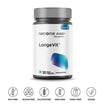
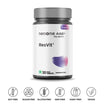
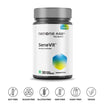

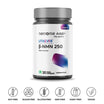
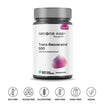
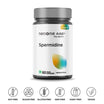
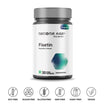

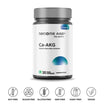

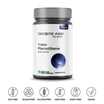










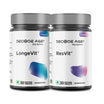












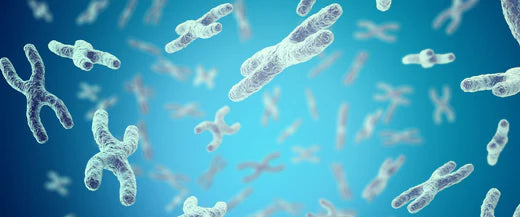

Leave a comment
This site is protected by reCAPTCHA and the Google Privacy Policy and Terms of Service apply.